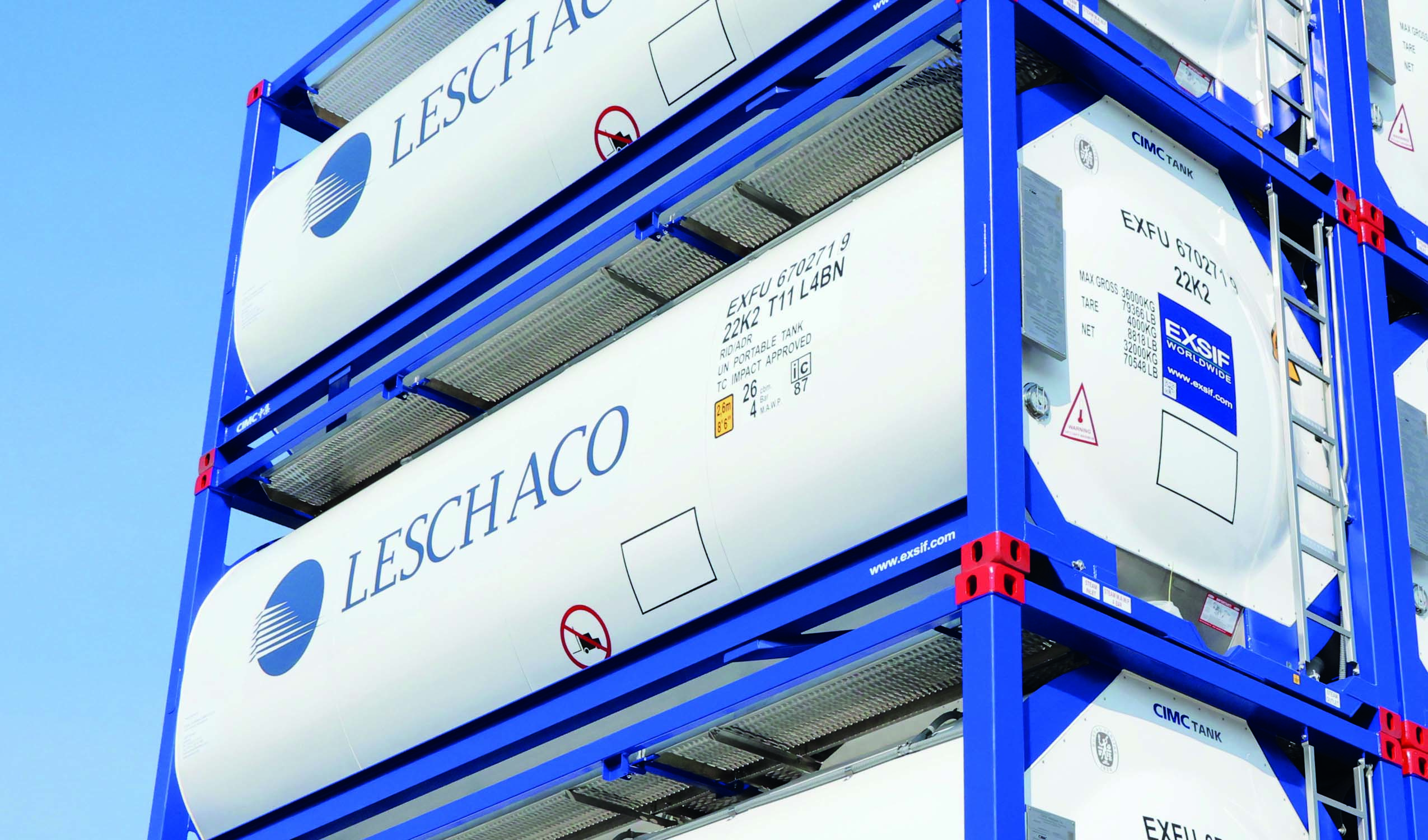The Leschaco Dangerous Goods Logistics Blog
Dangerous goods logistics is a matter of trust. Because dangerous goods logistics not only requires extensive knowledge and experience, but also a sense of responsibility for people and nature.
Advances in natural science, and chemistry in particular, have significantly raised our standard of living in recent decades. At the same time, the number of registered industrial chemicals has more than tripled in the last 20 years. Today, about 350,000 different substances are produced artificially. Scientists assume that there are around 6,000 substances among these that must be classified as dangerous goods.
With globalization, the growing international division of labor, the requirements for safe dangerous goods logistics are also increasing. With the dangerous goods logistics blog, Leschaco wants to offer a platform for the transfer of knowledge around this important topic for people and nature.
What is actually dangerous goods logistics? A definition.
By dangerous goods logistics, we mean all processes relating to the storage, packaging and transport of dangerous goods. For example, the “Agreement concerning the International Carriage of Dangerous Goods by Road(ADR)” defines gases, explosives, ammunition and fireworks, flammable, toxic, infectious, radioactive, corrosive, water and environmentally hazardous substances as dangerous goods.
To ensure safety throughout these processes, special technologies and equipment are required, such as fire protection systems, extinguishing devices, fireproof partitions, and chemical-resistant and particularly shockproof containers. But it is also about complex knowledge about the combination of dangerous substances, i.e. the knowledge of which dangerous substances must not come into contact with which substances under any circumstances: What is allowed to be stored and transported together with what at all? How must containers that have come into contact with specific dangerous goods be cleaned?
Dangerous goods logistics requires extensive specialized knowledge and careful and sustainable documentation of all processes so that risks can be minimized and, in the event of an accident, damage can be limited as far as possible. An essential part of this documentation is the conscientious marking of the dangerous goods before transport, i.e. the correct labeling and assignment to the appropriate dangerous goods class. Correct labeling is essential for safe loading, correct transport and a situation-appropriate procedure in the event of damage.
The latest posts on the dangerous goods logistics blog

Dangerous goods logistics is a question of competence and trust
Oliver Oestreich has been a member of the Leschaco Group’s management team since 2003. As Chief Operating Officer (COO), he is responsible for the global sea freight forwarding business, sales in the chemical and automotive sectors and for quality management, environment, compliance and safety. He knows the challenges of dangerous goods logistics, their development over the past twenty years, but also the current trends like few others in the international logistics industry. In April 2024, he will retire after a long career. He has already been preparing his successor Nils Fahrenholz for his new tasks for several months. For the dangerous goods logistics blog, Oliver Oestreich took the time to talk to Michael Kausch in detail about the current challenges in dangerous goods logistics and the most important markets.

Lithium batteries – An IATA white paper on the transportation of dangerous goods by air
Lithium batteries are dangerous goods. We have known this since the catastrophe of the transport ship “Felicity Age“, which sank in the waters of the North Atlantic off the Azores in spring 2022 after a major fire, presumably after a lithium-ion battery in the cargo caught fire. Shipping accidents involving lithium batteries almost regularly fill the leading media and the books of insurance companies. But of course aviation logistics is also concerned with the risks posed by batteries. The International Air Transport Association (IATA) has now published a white paper with the attractive title “Make Lithium Batteries safe to ship”. The paper deals with incidents involving lithium batteries and ways to make battery logistics in air transportation safer. We have taken a look at this document for the readers of Leschaco’s dangerous goods blog.

The advantages of tank containers compared to flexibags in the transport of hazardous liquids
For the safe and efficient transport of liquids in dangerous goods logistics, logistics companies must take into account a wide variety of requirements for “ideal transport conditions”. Tank containers and flexibags play a major role here. How do these two alternatives actually differ? This article attempts to bring clarity to an often confusing discussion. Tank containers are closed, robust containers made of high-quality stainless steel and offer a high level of protection and great safety against external influences, against leakage and contamination. They can be used to transport a wide variety of liquids, including toxic chemicals, sensitive food ingredients and pharmaceutical products.

Current challenges in contract logistics
For Leschaco, contract logistics and dangerous goods logistics go together like butter and bread. This is because contract logistics always shows its strengths where complex processes are involved, where it is not enough to simply transport goods from A to B, but where profound knowledge is required to gain an overview of complicated logistics chains in their entirety and keep them under control, where there really must be no room for error at any point in the process so that the entire process is not jeopardized. And where, if not in the transportation of dangerous goods, doesn’t everything depend on everything? Michael Clover, Head of Commercial Development at Transport Intelligence Ltd., exclusively presents the key findings of the latest Global Contract Logistics Report 2023.

The round has to go into the square. The life cycle of a tank container.
The round has to go into the square. The life cycle of a tank container. Leschaco is one of the pioneers of tank container logistics. We have been using tank containers for the safe transport of dangerous goods for around 50 years. Today, we have a fleet of more than 5,000 of our own tank containers in operation worldwide. They are the backbone of our logistics business. It is time to take a thorough and fundamental look at this “workhorse”. What actually is a tank container? A definition Basically, we understand a tank container simply as a container for transporting liquids or gases. These containers are used on ships as well as on the road, on rail and in air logistics, i.e. also in combined transport. In order for tank containers to be used for these diverse purposes, they must of course be standardized in terms of size and composition. These standards have been established by the International Maritime Organization (IMO) under the ISO 668 standard. For this reason, tank containers are often referred to as ISO tanks or intermodal tanks. The development of tank containers has been significantly influenced by the requirements of the chemical and food industries. The
This is where the editorial team of the Leschaco dangerous goods logistics blog blogs about the latest news and background information on dangerous goods logistics. The contributions do not reflect the opinion of Leschaco in every case, but always the position of the respective authors. Members of the editorial team come from trade media, agencies, friendly companies or directly from Leschaco. You can reach us by email . We are looking forward to your suggestions and questions.

